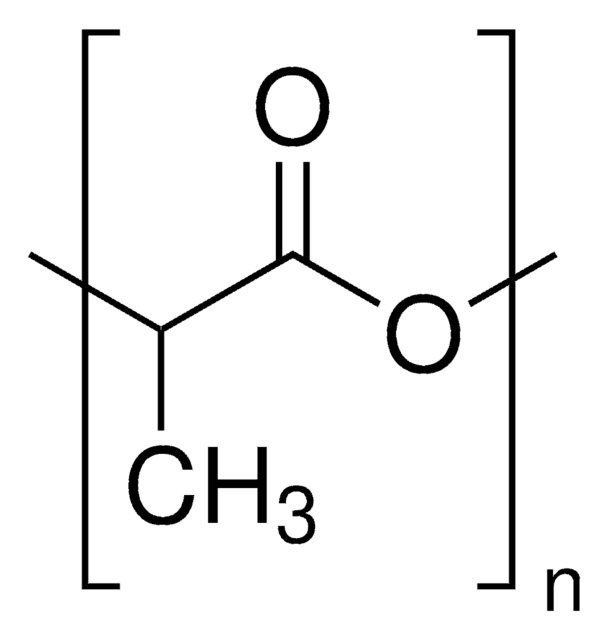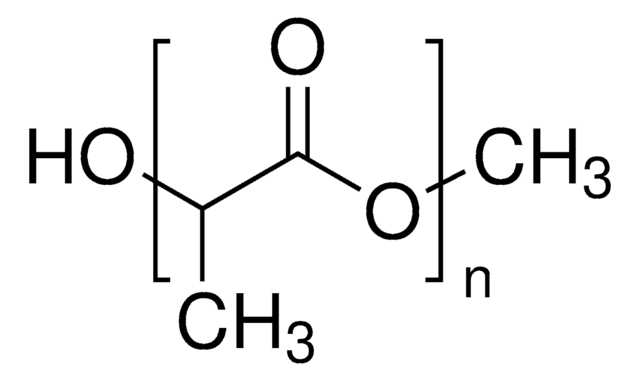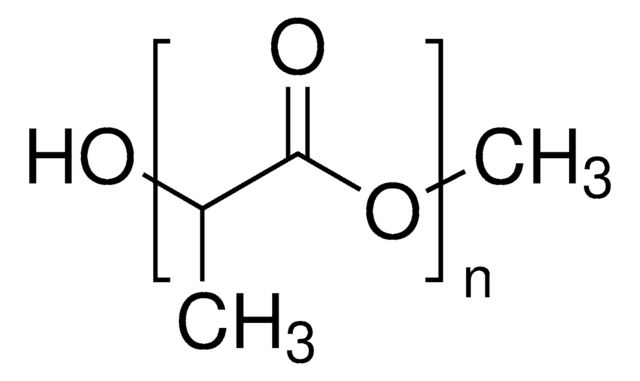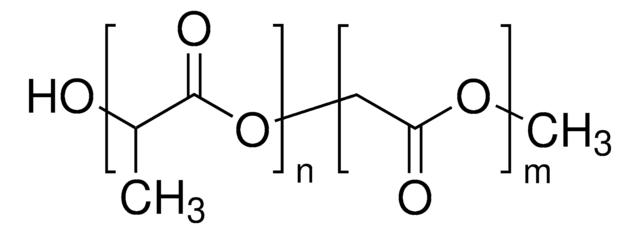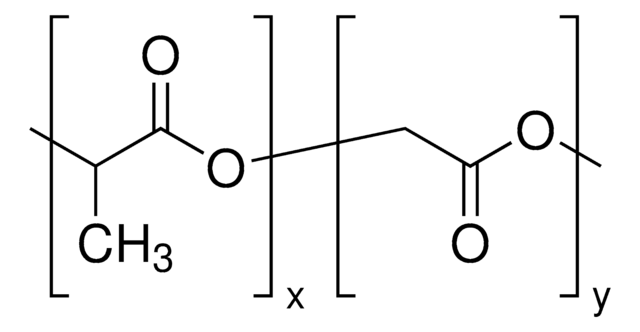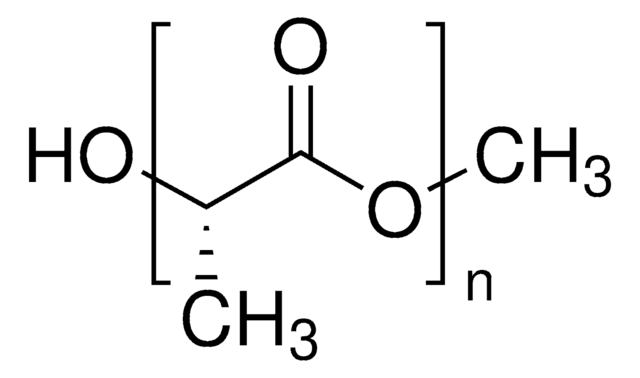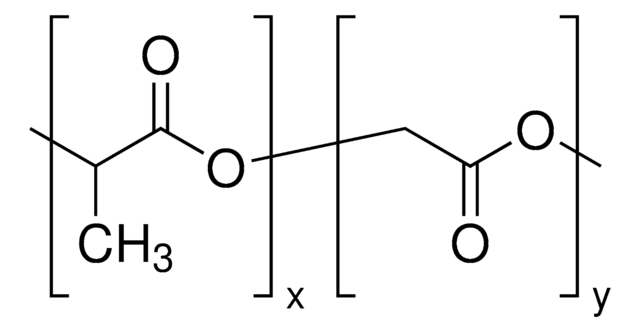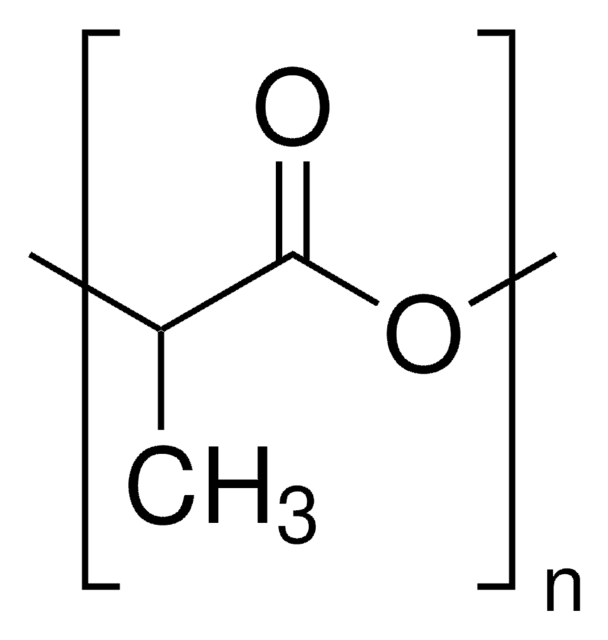719935
Resomer® R 203 S, Poly(D,L-lactide)
ester terminated, Mw 18,000-28,000
Synonyme(s) :
Lactide polymer, PDLLA
About This Item
Produits recommandés
Niveau de qualité
Forme
amorphous
Poids mol.
Mw 18,000-28,000
Intervalle de dégradation
<6 months
Viscosité
0.25-0.35 dL/g, 0.1 % (w/v) in chloroform(25 °C, Ubbelohde) (size 0c glass capillary viscometer)
Température de transition
Tg 46-50 °C
Température de stockage
2-8°C
Chaîne SMILES
[H]OC(C(OC(C(O[R])=O)C)=O)C
InChI
1S/C6H8O4.C4H4O4/c1-3-5(7)10-4(2)6(8)9-3;5-3-1-7-4(6)2-8-3/h3-4H,1-2H3;1-2H2
Clé InChI
LCSKNASZPVZHEG-UHFFFAOYSA-N
Description générale
Application
Informations légales
Code de la classe de stockage
11 - Combustible Solids
Classe de danger pour l'eau (WGK)
WGK 3
Point d'éclair (°F)
Not applicable
Point d'éclair (°C)
Not applicable
Faites votre choix parmi les versions les plus récentes :
Déjà en possession de ce produit ?
Retrouvez la documentation relative aux produits que vous avez récemment achetés dans la Bibliothèque de documents.
Les clients ont également consulté
Articles
Aliphatic polyesters such as polylactide, poly(lactide-co-glycolide) and polycaprolactone, as well as their copolymers, represent a diverse family of synthetic biodegradable polymers that have been widely explored for medical uses and are commercially available.
Aliphatic polyesters such as polylactide, poly(lactide-co-glycolide) and polycaprolactone, as well as their copolymers, represent a diverse family of synthetic biodegradable polymers that have been widely explored for medical uses and are commercially available.
In the past two decades, tissue engineering and regenerative medicine have become important interdisciplinary fields that span biology, chemistry, engineering, and medicine.
Contenu apparenté
Interest in utilizing biodegradable polymers for biomedical applications has grown since the 1960s.
Notre équipe de scientifiques dispose d'une expérience dans tous les secteurs de la recherche, notamment en sciences de la vie, science des matériaux, synthèse chimique, chromatographie, analyse et dans de nombreux autres domaines..
Contacter notre Service technique
